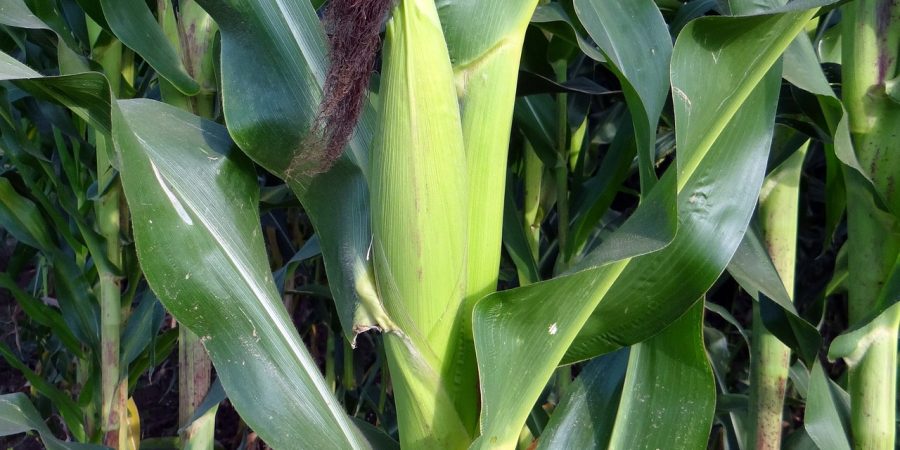Maize is Zambia’s staple crop, but very few people understand what it truly takes to farm it at scale. Five hectares sounds small on paper, yet it sits at an awkward middle ground, too big for casual farming, too small for full mechanisation, and too expensive to treat lightly. This article breaks down the difference between how traditional farmers and commercial farmers farm 5 hectares of maize, and why the two approaches lead to completely different outcomes
1. Land Preparation
Land prep is the first place where the gap between the two farmer types becomes clear.
Traditional Farmer
- Usually hires out a tractor once or twice.
- Basic ripping/disking (one pass)
- Or chemical spraying as a shortcut
- Minimal soil work. Usually just enough to plant
The benefit: lower cost upfront
The drawback: inconsistent soil structure and weaker yields
Commercial Farmer
Commercial farmers prioritise soil conditions. They do:
- Full mechanical prep. i,e ploughing or ripping
- Disking
- Harrowing
- Herbicide application before planting
The benefit: better seedbed and stronger emergence
The drawback: significantly higher prep cost
2. Seed
Traditional Farmer
- Buys hybrid seed, but often cheaper brands
- Spacing is estimated, not measured
- Seed rate can vary depending on availability. This keeps seed costs moderate, but also limits yield potential.
Commercial Farmer
- Selects hybrid varieties specific to the rainfall zone
- Uses calibrated spacing
- Targets optimal plant population
- Higher seed cost, higher yield reliability.
3. Fertiliser
This is where maize shows its true colours: it is fertiliser-heavy.
Traditional Farmer
- Applies less-than-recommended quantities
- Sometimes delays fertiliser because of cashflow or waits for prices to drop
- Relies heavily on rainfall to compensate for low nutrients
Costs are manageable, but yields are inconsistent.
Commercial Farmer
- Applies full recommended rates
- Splits application (basal + top dressing) properly
- Soil tests before planting
Most expensive part of the budget but stable production.
4. Chemicals
Traditional Farmer
- Controls weeds late
- Uses cheaper products
- Treats armyworm “when it appears”
Weeds and armyworms silently steal yield. Lower cost but higher risk of yield loss.
Commercial Farmer
- Uses pre-emergent weed control
- Follows up with post-emergent
- Monitors and responds early to armyworm
Reliable crop protection, but at a higher cost.
5. Labour Requirements
Traditional Farmer
- Relies on family or community labour
- Pays only for planting + weeding days
- Harvest is done cheaply or in exchange for bags of maize
Labour cost stays low.
Commercial Farmer
- Hires full labour teams that handle planting, harvesting, handling, storage, loading…
- Maintains predictable schedules
More expensive, but labour is consistent and efficient.
You might also like: Simple techniques to increase maize yield
6. Logistics
Traditional Farmer
- Sells early to avoid storage
- Sells to nearest buyer or aggregator
- Accepts lower prices to cut transport costs
Saves money on logistics, but loses market power.
Commercial Farmer
- Stores grain to wait for better prices
- Sells at strategic times
- Moves large volumes to higher-paying buyers
Higher logistics cost but better profit potential.
7. The Hidden Costs Nobody Mentions
Both types of farmers face these challenges, but commercial farmers plan for them, while traditional farmers often get caught off guard.
Regardless of scale, maize punishes you with:
- Moisture penalties
- Gunny bags
- Sprayer maintenance
- Unexpected pests
- Extra weeding
- Transportation and fuel costs
- Random emergencies (broken ridges, stray animals, etc)
Traditional farmers feel less of these costs while commercial farmers budget for them.
8. Cost Summary (Levels, Not Exact Figures)
| Cost Area | Traditional Farmer | Commercial Farmer |
|---|---|---|
| Land Prep | Medium | High |
| Seed | Medium | High |
| Fertiliser | Medium–High | Very High |
| Chemicals | Low–Medium | High |
| Labour | Low | Medium–High |
| Logistics | Low–Medium | Medium |
| Total Cost Impact | Manageable but unpredictable | Expensive but stable |
9. Yield Expectation
| Farmer Type | Typical Yield (Tonnes/Ha) | Bags Per Ha |
|---|---|---|
| Traditional Farmer | 1.5–3 t/ha | 20–60+ bags |
| Commercial Farmer | 2.5–7 t/ha | 50–300+ bags |
10. Which One Makes More Money?
Traditional Farmer
- Lower costs
- Lower yields
- Sells early
- Smaller losses in drought years but rarely sees big profits
Commercial Farmer
- High costs
- High yields
- Can time the market
- Makes money when managed well
- Bleeds cash if rainfall fails
Maize is a margin game. The one who controls cost AND yield wins.
So why do people keep planting maize?
- Tradition
- National demand
- Food security
- Habit
- FISP inputs masking true cost
And yes, because most farmers never calculate their break-even point.
Farming 5 hectares of maize is not cheap, simple, or predictable. The difference between a traditional farmer and a commercial farmer is not just money, it’s mindset, management, and risk appetite. Maize rewards discipline and punishes shortcuts. Traditional farmers survive. Commercial farmers scale if they manage risk well.
